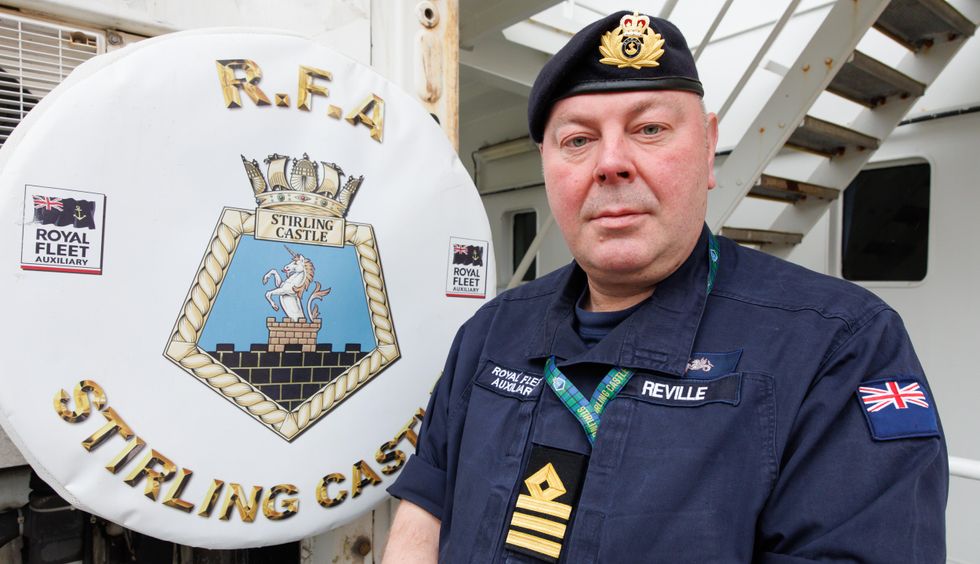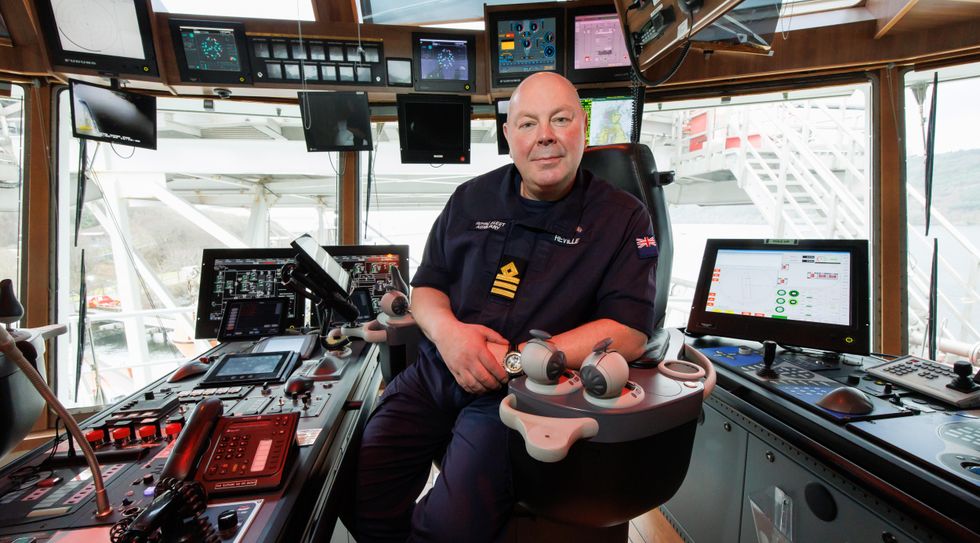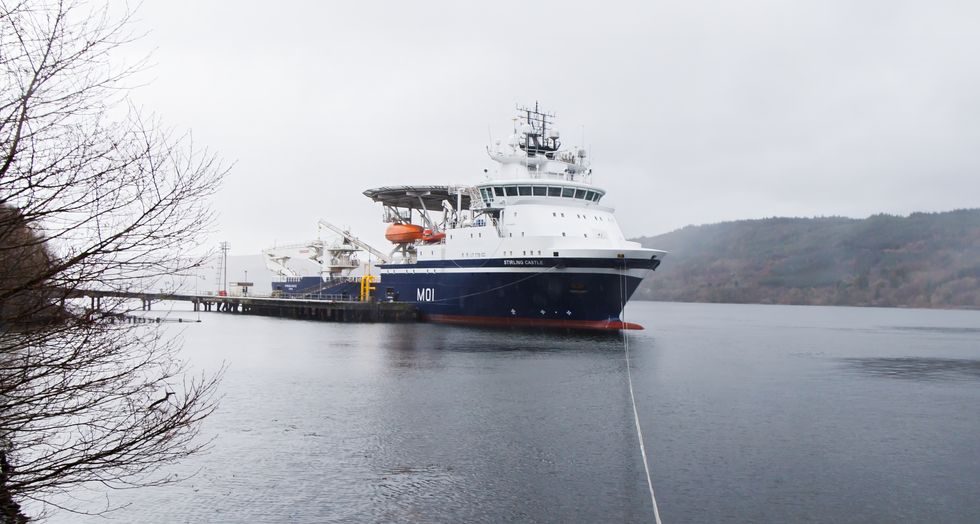
The commanding officer of the Navy’s new mine-hunting “mother ship” has spoken of his pride in the “wonderful” vessel after it recently arrived at its home on the Clyde.
RFA Stirling Castle is part of the Navy’s “paradigm shift” in how it deals with the threat of sea mines around the world and could be ready for operations later this year.
A former oil rig support ship, it was purchased by the Ministry of Defence in 2023 and will be used to transport and launch autonomous uncrewed boats which will scan the sea for mines.
Its crew are going through an intense period of trials to prepare the 6,000-tonne ship for “initial operational capability”, which they hope to reach later this year.
A dedication ceremony could take place as early as April.
RFA Stirling Castle and other ships like it will replace the Navy’s ageing fleet of Sandown-class mine-hunting ships, most of which have left the service.
Last week, the Navy’s mine and threat exploitation group (MTXG) showed some of their underwater drones to the PA news agency during a tour of the ship.

Stirling Castle’s commanding officer is Richard Reville, who has recently rejoined the Royal Fleet Auxiliary (RFA) after a career which included captaining super yachts.
He described the challenges of bringing a new class of ship into the RFA, which supports the Royal Navy.
He told PA: “There’s been equipment fits on board that had to be done in order for the vessel to move into its military service.
“So it’s been a long process, it’s been challenging but it’s been rewarding. It’s been very different for us.”
The threat from mines is “ever evolving and very potent”, he said, adding: “What we have the ability to do is deal with that safely by using autonomous and remote vehicles at a stand-off distance.”

He said he is confident RFA Stirling Castle and other ships of its class can take on the tasks performed by the fleet of Sandown and Hunt-class mine-hunters.
Mr Reville, who is from Milnathort in Perth and Kinross, said: “I have a soft spot obviously because for myself I’m not very far from Stirling Castle.
“Being on the first, Scottish-named ship is an absolute pleasure. I’m very proud to be the commanding officer of such a wonderful platform with the capability that it has.”
RFA Stirling Castle arrived in Scotland at the end of January.
After final training on the south coast of England, the mine-hunting ship will return to the Clyde where it will spend most of this year.
Its main job will be to carry mine-hunting boats which are being used to clear the submarine lanes around the Faslane naval base.
As well as operating these boats, the MTXG uses underwater drones to pinpoint sea mines and historic ordnance.
We're bringing in a brand new remote and autonomous capability
Lieutenant Chris Stone
One of these is the commercially available Iver 3, which can autonomously scan the seabed using sonar before reporting its findings back to crew on the surface.
Lieutenant Chris Stone, of the MTXG’s Zulu Squadron, told PA: “It’s a paradigm shift for the Royal Navy, from the legacy (mine counter-measure vessels) that Scottish people will definitely have seen about on the Clyde.
“We’re bringing in a brand new remote and autonomous capability.”
He added: “You only have to threaten to lay a mine in an area and that raises insurance premiums for shipping.
“We need a credible capability to deal with that in the future and that’s what we’re working towards now.”
As a former commercial ship, the comfort of the accommodation on RFA Stirling Castle is higher than on Royal Navy warships. Previously a Norwegian vessel, it has an onboard sauna and two gyms.
The ship is relatively lightly crewed with 54 personnel but only 27 will be deployed at any one time.
Mr Reville said the crewing arrangements gave a good “work and home life balance” and would help with recruitment.













